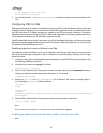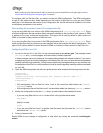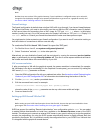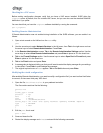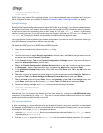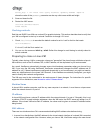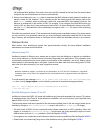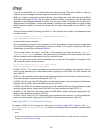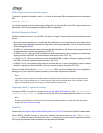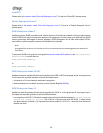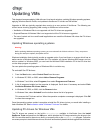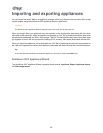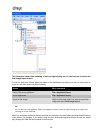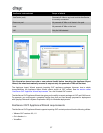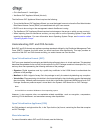
31
RHEL Graphical Network Install Support
To perform a graphical installation, add VNC to the list of advanced OS boot parameters when creating the
VM:
graphical utf8 vnc
You will be prompted to provide networking configuration for the new VM so that VNC communication can
be enabled. The standard graphical installer will then be displayed.
Red Hat Enterprise Linux 5
XenServer requires that you run the RHEL 5.4 kernel or higher. These kernels have the following known
issues:
• During the resume operation on a suspended VM, allocations can be made that can cause swap activity
which cannot be performed because the swap disk is still being reattached. This is a rare occurrence.
(Red Hat Bugzilla 429102).
• In RHEL 5.3, sometimes when there are many devices attached to a VM, there is not enough time for all
of these devices to connect and startup fails. [EXT-17]
• In RHEL 5.0 to 5.3, use of the XFS file system can lead to kernel panic under exceptional circumstances.
Applying the Red Hat RHEL 5.4 kernel onwards resolves this issue. [EXT-16 ]
• In RHEL 5.2, 5.3, VMs may crash when a host has 64GiB RAM or higher configured. Applying the Red
Hat RHEL 5.4 kernel onwards resolves this issue. [EXT-30]
• In RHEL 5.0 to 5.3, the network driver contains an issue that can, in rare circumstances, lead to a kernel
deadlock. Applying the Red Hat RHEL 5.4 kernel onwards resolves this issue. [EXT-45]
When you install the XenServer xe-guest-utilities RPM, an entry is added to the yum configuration,
allowing you to pick up kernel updates provided by Citrix when they become available.
Note:
In previous releases, XenServer included a replacement RHEL 5 kernel that fixed critical issues that prevented
RHEL 5 from running effectively as a virtual machine. Red Hat has resolved these issues in RHEL 5.4 and
higher. Consequently, XenServer no longer includes a RHEL 5 specific kernel
Preparing a RHEL 5.x guest for cloning
To prepare a RHEL 5.x guest for cloning (see the section called “MAC address”), edit /etc/sysconfig/
network-scripts/ifcfg-eth0 before converting the VM into a template and remove the HWADDR line.
Note:
Red Hat recommends the use of Kickstart to perform automated installations, instead of directly cloning disk
images (see Red Hat KB Article 1308).
CentOS 4
Please refer to the section called “Red Hat Enterprise Linux 4.5 to 4.8” for the list of CentOS 4 release notes.
Unlike RHEL4, CentOS includes a third-party updates mechanism known as yum. The xe-guest-
utilities RPM will install a XenServer entry for yum, allowing you to pick up kernel updates provided by
Citrix using the standard update mechanism as they become available.



